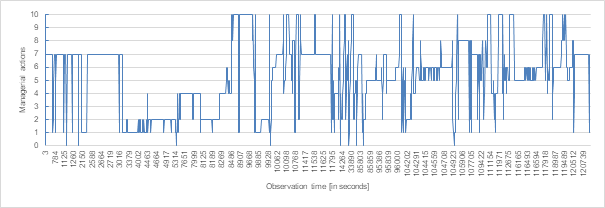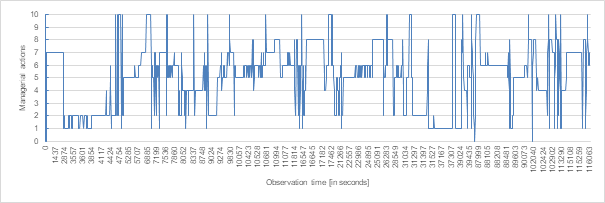Two days ago, I described how, using the technology used to build an artificial manager, TransistorsHead.com online manager tools, it is possible to reverse engineer the learning process of an artificial manager and measure the leadership style of a human manager. Our study, which we performed using the non-participant observation method, involved two teams led by managers. We tried to verify two hypotheses, one of which we found true and the other false.
If you haven’t yet read about this study, see this blog post:
You might ask yourself: since human managers tend to have different leadership styles, will artificial managers also have different leadership styles?
If we treated the question “humanly,” it would have an answer, variations of which I described in this blog post:
What does this phenomenon look like from the side of more concrete managerial activities that reflect realistically what a manager does? Imagine that in your company you buy two artificial managers. Where do you buy them? That’s a good question… But if there were such a store, the CEO of your company would go there, look and buy two different copies of the artificial manager. Each of them has such characteristics of project work, as I have shown in Figure 1 and Figure 2. In both figures, the managerial activities, numbered from 1 to 10, stand for: set goals (1), describe tasks (2), generate ideas (3), specify ideas (4), create options (5), choose options (6), check motivation (7), solve conflicts (8), prepare meetings (9), define problems (10).

Figure 1: Work characteristics of manager 1
Manager 1 (Figure 1) at the beginning of a project always spends a lot of time checking motivation (7), then gets down to setting goals (1), then uses idea detailing (4), then usually moves on to defining the problem (10), and in further work chooses different activities at different points in the project. He does this very haphazardly and quickly.

Figure 2 Work characteristics of manager 2
Manager 2 (Figure 2) at the beginning of the project starts with a brief motivation check (7), then quickly sets the goal (1) and then performs various managerial activities, but he does it quite quietly, the activities take a long time and the work is done very methodically (e.g., he sets decision options and makes decisions).
If these charts of activities performed during the project were the characteristics of robot managers, and not – as it really is – the characteristics of human managers, taking part in the study, which one would you choose for your department?
As you can see, this is what a robot manager will learn, what a human manager can do. This is, of course, a simple imitation of a human using a robot, but each of us managers could have a double in this way – a robot manager.

